The African continent offers a unique spectrum of wildlife. There are over 1,100 species of mammals and more than 2,600 species of birds in Africa! Therefore, one of the main reasons why people are going to Africa is to see the wildlife, of course!
You will find the fastest, the largest, and the weirdest animals. Also, speaking of the fastest, did you know that 4 out of the 5 fastest land animals live in Africa?
The fastest is the cheetah, with short bursts of speed at 70 mph (112 km/h). Then you have the wildebeest, the Thompson gazelle, and the lion, all three with a top speed of 50 mph (80 km/h).
I listed here some intriguing and fun facts about the African wildlife that you might encounter during your safari vacation with the help of National Geographic and the African Wildlife Foundation.
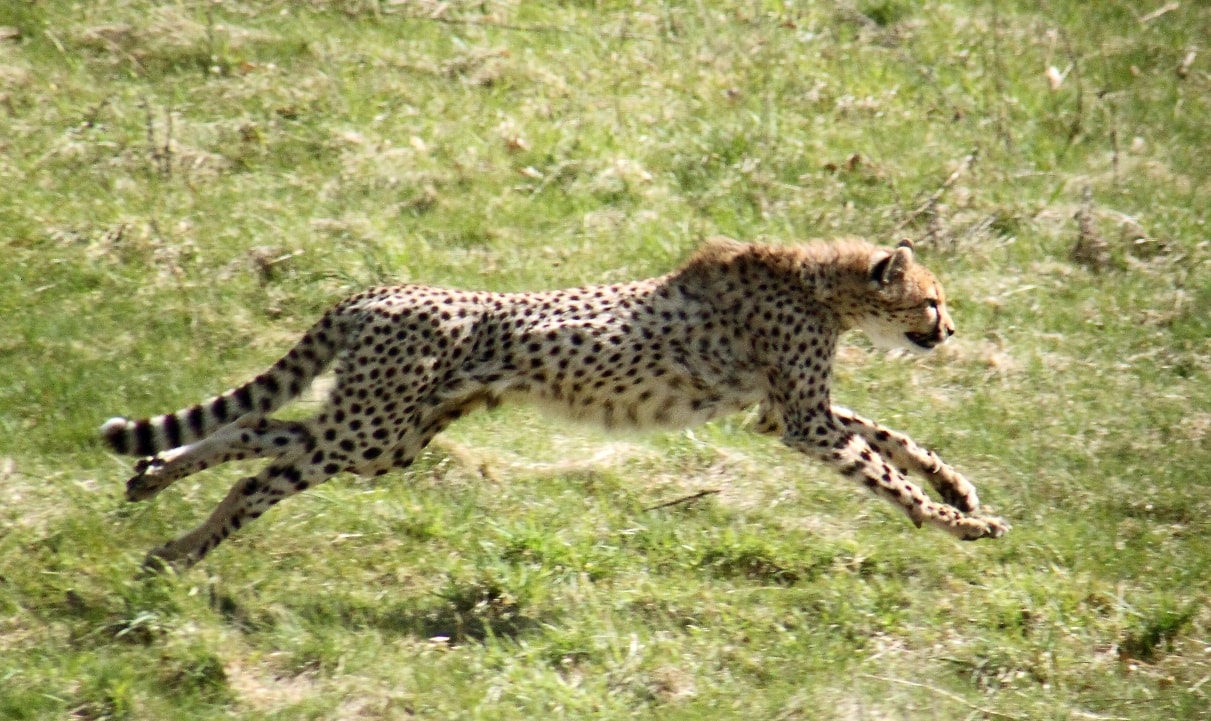
Giraffes
The Giraffes are the tallest land mammals on earth. The length of their legs is 6 feet (1.8 m), which is taller than many people.
Amazing facts about the giraffes:
- The giraffes have two modes of locomotion: walking and galloping. The giraffes cover 15 feet (4.5 m) with every step, which translates to a walking speed of 10 mph (16 km/h). Also, they gallop for a short distance at a speed reaching up to 35 mph (56 km/h).
- The giraffe’s neck is too short to reach the ground. Thus, when the time comes to drink, the giraffe has to adopt an awkward position. They have to kneel or spread their front legs to reach the water.
- The giraffes get most of the water they need from their food. They eat up to 75 lbs (35 kg) of plants per day and mainly the acacia leaves, their favorite food.
- To protect the giraffe’s brain from sudden changes in blood pressure, the blood vessels in the neck have valves that regulate the blood flow to the brain when the giraffe lowers its head to drink.
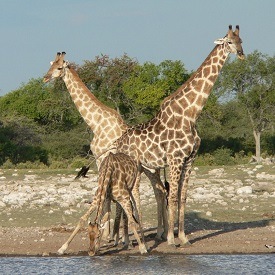
- The giraffes only sleep 5-30 minutes per 24 hours, and they sleep standing up!
- The giraffe’s legs are powerful and have at their extremities a hard and sharp hoof of 12 inches (30 cm). The giraffe can kill a lion with one kick!
- Giraffes have a blue tongue of a length of 20 inches (50 cm), which allows them to reach very high leaves. The dark color of the tongue protects it against sunburns. The tongue is also used for personal grooming of the ears and nose.
- Contrary to popular belief, the giraffe emits sounds. These sounds include hissing, bellowing, and snorting, but they are inaudible to human ears.
- The giraffe’s spots are like fingerprints, and no two giraffes have the same pattern.
- The giraffes give birth standing up. The calf at birth measures 6 feet tall (1.8 m), and can stand up within 5 minutes after birth.
Ostriches
The flightless ostriches are the biggest birds in the world and are built for running. They can weigh up to 320 lbs (145 kg) and measure up to 9 feet (2.7 m).
The ostriches live in dry and hot savannahs and also in the African woodlands. Their lifespan is 50-75 years.
Did you know that:
- The ostriches are the only bird that secret urine separately from feces.
- The term “cocks or roosters” refers to the male ostriches whereas the females are called “hens.”
- A group of ostriches is known as a flock. It contains up to 10 birds: 1 dominant couple with several other females.
- The eggs are laid in the communal nest called a dump nest, which can hold up to 60 eggs at one time. Both genders take turns hatching the eggs. The dark male (predominantly black with some white) incubates the eggs at night. The dominant female (grayish-brown) takes over during the day.
- Their colors offer excellent camouflage and therefore protection against predators.
- The ostriches lay the biggest egg amongst all the bird species. The diameter of the egg is 6 inches (15 cm) and weighs up to 3 lbs (1.3 kg). Moreover, with only one egg you can make an omelet able to feed 12 people!
- The ostriches only have two toes, whereas, birds, in general, have four toes. They only use one toe for running, and the other is for balance.
- Ostriches can run at a steady speed of 31 mph (51 km/h) with a short burst of speed reaching up to 43 mph (70 km/h). They used their wings as rudders to change direction.
- The wings are used to keep their balance while running, also to protect the chicks from the rain and the sun, and for the courtship.
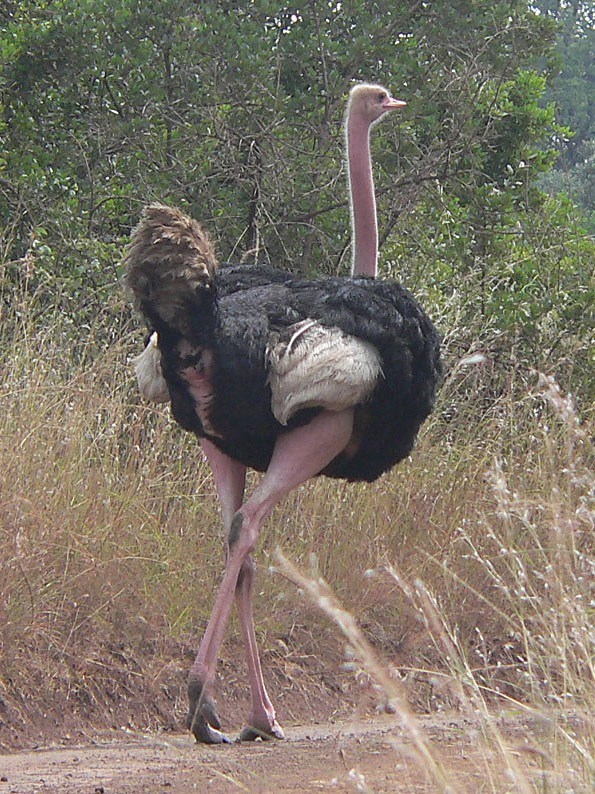
- Their legs are formidable weapons. The ostriches can kill a lion or a man with their kick forward, so stay behind!
- The ostriches are farmed all around the world, mainly for their feathers, their skin, and their lean red meat. Also, many African tribes use the shell of the ostrich egg to make necklaces and ornaments.
- The ostriches don’t bury their heads in the sand when they feel threatened. They press their long neck to the ground, and their feathers blend flawlessly with the sandy ground, so from afar it looks like they have buried their heads in the sand!
- The ostriches have no teeth! To overcome this, they swallow pebbles, which help grind their food in the gizzard! Adult ostriches can carry up to 1 kg (2 lbs) of pebbles in their gizzard!
- The ostriches have the largest eye of any land animal with a diameter of 2 inches (5 cm). Moreover, three sets of eyelids cover their eyes. However, the ostrich’s brain is smaller than its eye!
- The ostriches can go without water for an extended period. The plants are their primary source of water. Still, they like bathing every time they get the opportunity!
Hippopotamuses
Hippopotamuses are among the most popular animals in Africa along with zebras, giraffes, and lions.
There are two species of hippopotamuses:
- The common hippopotamus (Hippopotamus amphibius) lives in East Africa and South of the Sahara. The common hippo can reach 13 feet long (4 m) and weigh up to 7000 lbs (3,175 kg).
- The pygmy hippopotamus (Choeropsis liberiensis) dwells in West Africa, but it is very rare. The pygmy hippo is between 4.9-5.7 feet long (1.5-1.7 m) and weighs up to 440-600 lbs (200-272 kg).
The life span of the hippo is about 45 years.
Mind-blowing facts about the hippopotamuses:
- Mating takes place underwater as well as giving birth. The female hippopotamuses give birth to one calf every two years.
- The nursing period lasts 12 months. Even though, three weeks after birth, the calf starts eating grass!
- The first thing a newly born hippo learns is to swim to catch their first breath of air! The calf weighs between 55-100 lbs (25-45 kg), and suckling can occur underwater or on land. The baby often rests on its mother’s back when it is in the water and swims underwater to suckle.
- Hippos live in herds also known as “schools” containing between 10 to 30 hippos.
- Soon after the birth of the calf, the mother and the calf return to the herd since it offers protection against predators (crocodiles, lions, and hyenas).
- The hippos’ milk is pink. This is due to the secretion of 2 acids: the hipposudoric acid and the norhipposudoric acid. The names of both acids come from the word hippopotamus. The hipposudoric acid is red. Because of its color, many refer to it as “blood sweat”, but there is no blood or sweat present in the milk. As for norhipposudoric acid, it has an orange color. The mixture of the two acids in the milk leads to pink milk!
- The hippopotamuses are the only mammals producing pink milk with 500 calories per cup!
- Hippopotamuses have no sweat glands. They control their body temperature by staying in the water or the mud. Furthermore, hippopotamuses sweat 3-5 times more than humans.
- Hippos secrete a red oily substance that contains both the hipposudoric and norhipposudoric acids. This oily substance acts as a skin moisturizer and also as a sunscreen since it offers protection against germs and absorbs UV rays. Contrary to popular belief, hippos don’t sweat blood!
- When they feel threatened, the hippos will open their mouths, so beware!
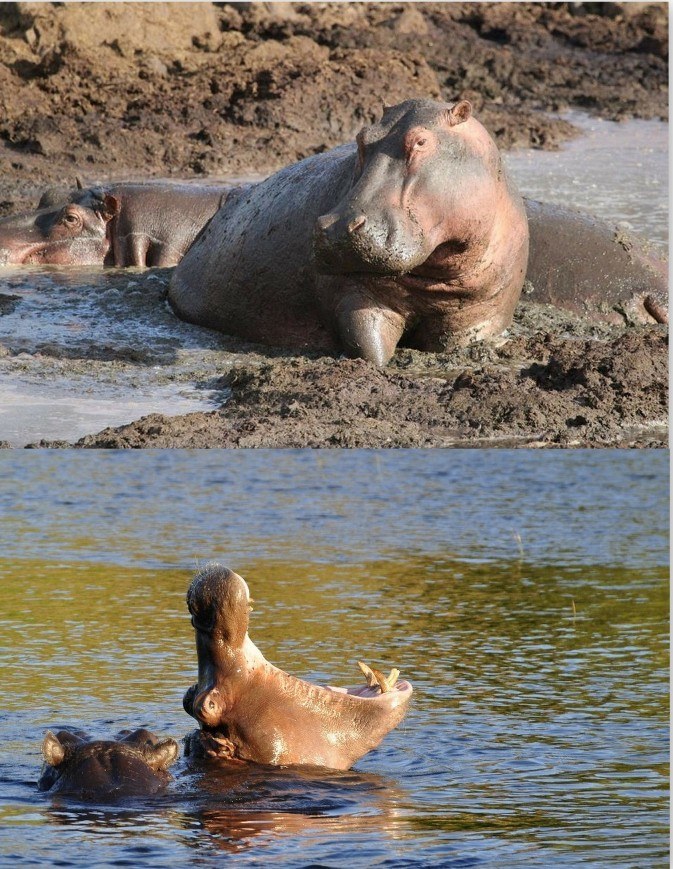
- Adult hippos can stay submerged for 5-6 minutes, and they sleep underwater! The process of surfacing and breathing is done automatically. So, they can resurface to breathe without waking up!
- Hippos cannot jump. However, these massive mammals can reach a speed of 19 mph (30 km/h) and therefore, outrun a human.
- Hippos spend around 16 hours a day submerged in rivers or lakes. Hippos are herbivores and feed at night. They can eat up to 100 to 150 lbs (68 kg) of plants. Usually, they walk between 2 to 6 miles (3.2 to 10 km) to feed.
- Hippos are territorial while in the water, but not on the land. Males will mark their territory with feces spread by fluttering the tail while defecating.
- The hippopotamuses are the deadliest animals in Africa. They have killed more humans than the cheetahs, or even the lions! However, when on land if they feel threatened, they will run for the water!
- The mouth can open at a 150° angle and contains spike-like teeth that can snap a crocodile in half!
Lions
The lion is known as the “King of the Jungle” because of its strength and its ferocity. Except that the lion lives in savannahs and grassy plains, nowhere near the jungle!
Their lifespan is about 17 years for the female and 15 years for the male.
The lionesses weigh up to 265-395 lbs (120-180 kg) and reach full maturity by the age of 5. On the other hand, the males weigh up between 330-550 lbs (150-250 kg) and reach maturity around the age of 7.
The lions are listed as vulnerable on the IUCN Red List of threatened species. The decline in their numbers is due to the loss of their habitat.
The lions were once present in Europe, Asia as well as Africa. Nowadays, they are mostly found in Africa, especially in Botswana, South Africa, Kenya, Zambia, and Tanzania.
Besides the African continent, nowadays, the only place where you can find lions in the wild is in the Sasan-Gir National Park in India.
Interesting facts about the lions:
- The Lions are known to be the most social of all the “big cats” and live in groups called pride. The pride is formed of 15 lions: 3 males, 12 females, and their cubs. All females in the pride are related and spend their whole life with the same pride. The males only stay 2 to 4 years before being kicked out.
- The males defend the territory of the pride and guard the cubs, whereas the females are in charge of hunting.
- The lions can reach speeds of 50 mph (80 km/h), but only for a short distance (300-400 m or 980-1,310 feet) because of a lack of stamina. They can leap as far as 36 feet (11 m).
- A lion’s heels, never touch the ground when it walks.
- Adult lion’s roar can be heard up to 5 miles away (8 km).
- Lion’s mane becomes darker as its ages.
- The tuft at the end of the lion’s tail appeared around the age of 5 months. The lions are the only member of the cat family to have one.
- Lions usually sleep between 16-20 hours per day.
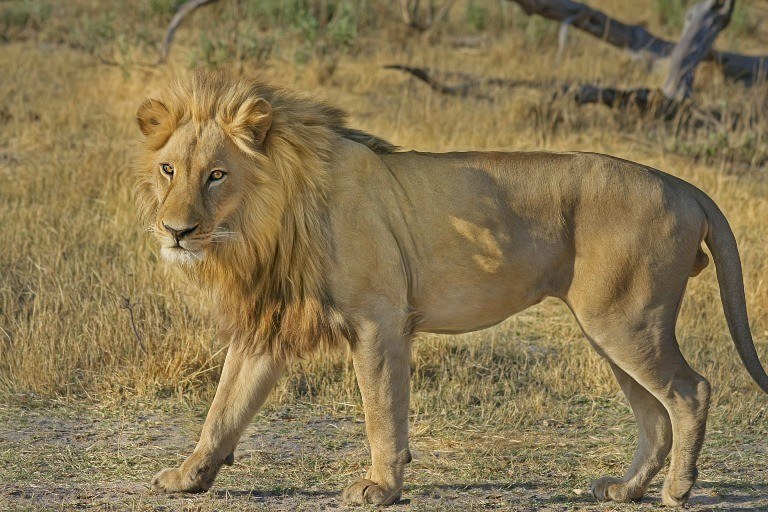
- The lions kill their prey by strangulation or suffocation. Their preys include jackrabbits, monkeys, baboons, impalas, gazelles, zebras, and wildebeests.
- The lions have excellent eyesight, which is five times better than humans.
- The cubs have spots called rosettes at birth.
Elephants
African elephants are the largest land mammals on the planet. They can reach a height of 13 feet (4 m) and weigh up to 6-7 tons. They have no natural enemies.
Fun facts about the elephants:
- Humans are either right or left-handed. Well, it is the same thing for elephants since they are either right or left-tusked!
- African elephants are very social and communicate through a series of grumbles and rumbles. These sounds are inaudible to humans since they fall into the low-frequency range.
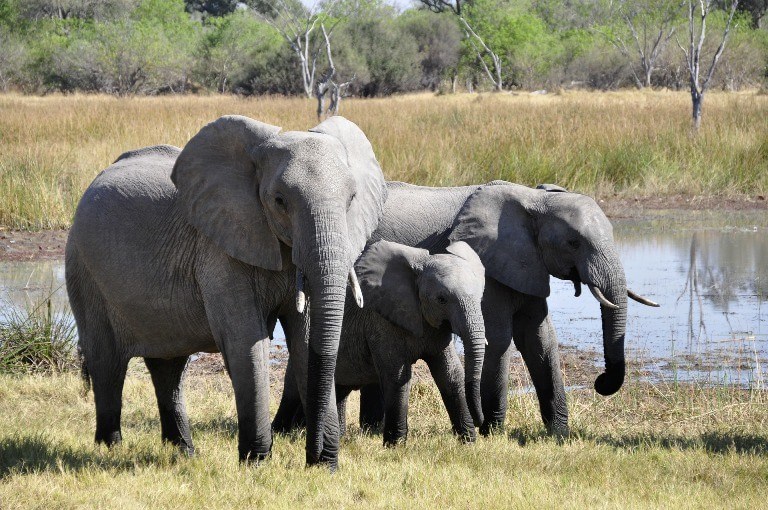
- Elephants are vegetarians and eat up to 375 lbs (170 kg) of plants, and drink up to 42 gallons of water (160 liters) each day.
- The trunk of an elephant has 40,000 muscles.
- Elephants don’t have sweat glands. They cooled down by pouring water over their bodies. In arid conditions, they used their trunk and sucked up water from their throat, and pour it over their bodies.
- Elephants are the most intelligent animals in Africa. They have an excellent memory combined with great learning ability, and they have a sense of humor!
Miscellaneous Mind-blowing Facts About Various Wildlife
Did you know that:
- The stomach acid of vultures is strong enough to destroy diseases such as anthrax and cholera.
- Leopards are excellent tree climbers. They place their kills in trees to protect them from the scavengers, the hyenas. They are a strong swimmer and will eat from time to time fish and crabs.
- A few minutes after being born the wildebeest can run, and after a few days it can follow the pace of the herd.
- Rhinoceros have poor eyesight but excellent hearing and sense of smell.
- The white rhinoceros is not white at all. Its color is a slate gray to yellowish-brown. The name comes from the Dutch word “weit” which means “wide” and was given because of the rhino’s wide muzzle. I guess it got lost in translation!
Ready to Journey to Africa?
Now that you are an expert on the notables of the African wildlife, you are ready for your African safari adventure of a lifetime! So, what are you waiting for to book your trip?
Many African countries harbor the wildlife that I outlined in this post, and so much more! With more than 1,100 species of mammals and over 2,600 bird species, you will not run out of wildlife to observe while traveling on the Dark Continent!
Do you have any questions about African wildlife? What are your favorite animals? Please drop me a line in the box below to let me know. I am looking forward to hearing from you.
Thanks for the informative travelogue. Very well stated and descriptive. Now all I must do is to remember.
I am glad that you found value in my post about some facts about African wildlife. Thank you for stopping by, hope you boost your knowledge.
Can you really see all of these animals at once on a safari? Or do your chances vary depending on the time of year, etc.?
Yes, you can see all these animals during a safari. It’s up to you, though. First off, you have to plan your safari vacation, make a wishlist that includes all the animals you want to see, and book a long trip to allow you to see all the wildlife you want to see.
Then, choose one or more destinations to fulfill your wish list. But keep an open mind while making your animals’ wishlist so that you won’t be disappointed if you don’t see all of the animals from your list. The wildlife is constantly moving. Therefore, there is no guarantee of wildlife sightings. Also, you might see other animals that were not on your list and are as impressive. For instance, in Botswana, you won’t be able to see many rhinoceros, but Botswana is renowned for offering one of the best safari experience and have more than 500 species of birds!
Thanks for stopping by.